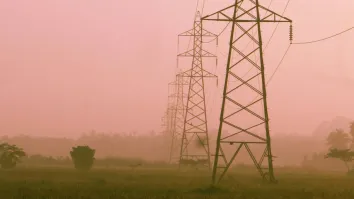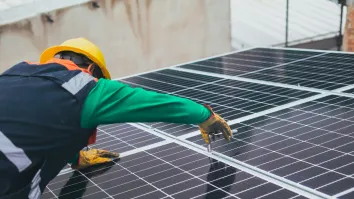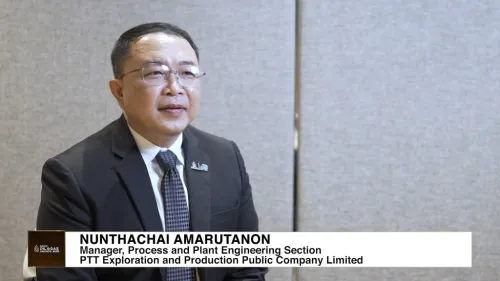
Power market reforms in Southeast Asia
By Erik KniveCompetitive markets are usually the most efficient way of organizing economic activity, and power markets are no exception. Competitive operation encourages more capacity and a system which will use the cheapest power generators available to meet demand.
Successful liberalization of electricity markets in Europe in the early 1990s formed the basis of a wider trend towards the deregulation of power markets around the world. The electricity market reforms in the Nordic countries were more far-reaching than in the EU, often championed as a shining example to the rest of Europe, being efficient, transparent and well-functioning. The integration of the national markets led to a dilution of market power among incumbents.
Singapore was the first country in Southeast Asia to launch a competitive power market in 2001. In 2006, the Philippines followed with the commencement of the Wholesale Electricity Spot Market (WESM). Korea introduced competition on the generation side in 2001, as five generation companies were spun off from the state-owned Korea Electric Power Corporation and the Korea Power Exchange was established. Concerns over price spikes and unstable supply in a planned wholesale market observed in the California electricity crisis did not see reforms in the competitive market in Korea develop much further.
Currently, the focus of the industry is on Asia’s rising star, Vietnam. The Vietnamese Government has underlined the need of a more efficient, competitive power market. Plans are made for a three-phase roadmap beginning with a competitive generation market slated to be in operations by 2012, three years ahead of plans.
Transition from a natural monopoly to a competitive market will not necessarily result in lower tariffs to consumers. However, it ensures that the electricity price reflects the cost of power generation - essential to secure a sustainable supply of energy within a market. State-owned generators frequently subsidize prices of electricity, either directly through electricity price caps or indirectly through fuel subsidies. The latter is of particular significance since fuel makes up most of a power plant’s generation costs. Removal of subsidies ensures that all consumers pay the true cost of electricity, thus providing incentives for private investors to build additional capacity, which will alleviate the power supply and prevent power shortage.
In the long run, prices may fall due to gains from efficient operation, labor productivity and economies of scale. In the short term, privatization of subsidized state-owned generators provides immediate relief of government spending. This frees up resources for other critical infrastructure and social developments, much needed to support the burgeoning economy of Vietnam and other emerging Asian countries.
Furthermore, privatization puts private and foreign investors in competition and brings much needed investment, technological know-how and operational expertise to the market. In the Philippines, privatization and the introduction of a competitive power market led to a substantial increase in generation asset values. More significantly, SN Power’s investment in the 360 MW Magat hydropower plant in 2006 for US$ 530 million brought along an additional US$ 6 billion in foreign investments, according to the IFC.
Power market reforms should also consist of installing a diverse source of generation and ensure grid stability. Cleaner and cheaper sources of generation such as hydropower not only provide social and environmental benefits and lower the average cost of generation, but also provides price stability, unaffected by fossil fuel cost fluctuations. The reliance on one or two sources of generation makes the market vulnerable to higher volatility in prices or acute shortages in power supply.
Grid stability is necessary to prevent blackout and other system disturbances, and a stable system requires sufficient spare capacity to cater for peak demand. System operators can pay generators to keep or add reserve capacity. In addition, load facilities can be equipped to provide reserve to restore system frequency through the interruption of non-critical consumption within a limited duration. Ideally, the tariff setting mechanism should allow pass-through of generation and transmission cost into retail tariffs. Governments should also strive to eliminate any bureaucratic red-tape that will increase the time needed to obtain approvals to build new plants.
There is no one size fits all design that should be adopted universally in the reforms of the power sector. In any competitive market, the abuse of market power may emerge. The California electricity crisis in the early 2000s was caused by a poorly designed market as wholesale prices were deregulated, but retail prices were regulated, exacerbated by market manipulation. Thus the market design should curb the potential works of market power by bringing in more and diverse market participants. In Vietnam, where cross border trade already make up about 3% of the country’s supply, the market design should foster this to reduce market power and rip the benefits of a more diverse generation mix.
It is essential that market regulators and market operators perform with integrity, transparency and robustness in order to achieve economic efficiency, avoid unnecessary transaction costs and allow prices to reflect the marginal cost of production.
Erik Knive, Executive Vice President Southeast Asia, SN Power
Eric Ho, Senior Market Analyst, SN Power
Ann-Mari Lillejord, Business Manager Southeast Asia, SN Power
Wu Yan Bin, Senior Business Analyst, SN Power




















 Advertise
Advertise








